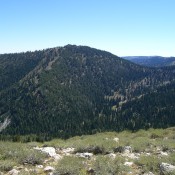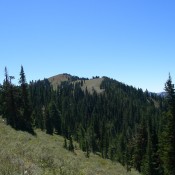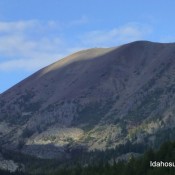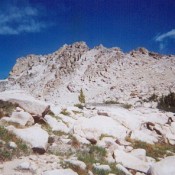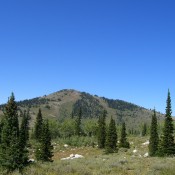
Climbing and access information is on Pages 365-366 of the book. Matt Durrant provided the peak description and access and route article found below below. Below Matt’s article you will find Livingston Douglas’ 2018 route descriptions. USGS Paris Peak. Updated November 2024 Bloomington Peak by Matt Durrant Bloomington Peak is a large conical mountain just east of the crest of … Continue reading
